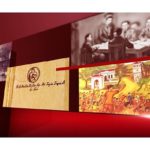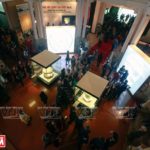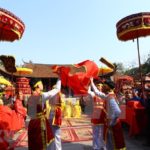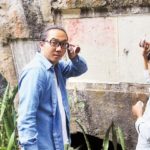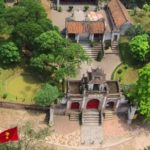The statue of King An Duong Vuong, who ruled the kingdom of Au Lac (current-day Vietnam) from 257 to 207 BC, has been recognized as a national treasure. This iconic figure is revered by the Vietnamese people for his courage and bravery in defending his kingdom from foreign invaders. King An Duong Vuong is also known for his innovative contributions to the development of the region, including building irrigation systems and creating the first Vietnamese alphabet. The statue is a reminder of his legacy and a symbol of national pride.
The warehouse is believed to have been built during the 18th century, and the objects found in it provide invaluable information about the culture, history, and art of the past.
The statue from the 19th century revered at Co Loa Special National Relic is an invaluable source of culture, history, and art. Unearthed during the restoration of the Thuong temple, the underground copper warehouse is believed to have been built during the 18th century. This discovery provides an insight into the culture, history, and art of the past, offering never-before-seen unique values.
It is widely believed that the statue of King An Duong Vuong, located in the temple, was cast using copper from a royal storehouse. The casting of this impressive sculpture was completed in 1897.
The Statue of King An Duong Vuong stands proudly as a symbol of Vietnamese culture and history. It is crafted from a copper alloy and created using a wax mold casting technique (beeswax). Seated atop a solid cylindrical pedestal, the King is depicted with an air of calm dignity and majesty, holding a royal tablet in both hands.
This awe-inspiring sculpture is a reminder of the rich heritage of the Vietnamese people. It is a lasting tribute to the courage and strength of the King, as well as a reminder of the indomitable spirit of the Vietnamese nation.
| A palanquin procession at Co Loa traditional festival. Photo: VNA |
The King wears a binh thien crown adorned with the motif of “two dragons adoring the sun.” He is dressed in a long-sleeved, high-collar robe and his shoes are decorated with vibrant daisies in full bloom.
The long robe’s decorative patterns are positioned symmetrically, featuring two dragons flanking the sun, a flying dragon, clouds, moon, stars, dragons, phoenixes, peacocks, plants, flowers, water waves, and other sacred symbols.
An inscription that reads: “Statue of King An Duong Vuong, cast on May 16, 1897, year of the Rooster, weighing 255 kg” is carved and inlaid with gold on the statue.
| A statue of King An Duong Vuong has been recognized as National Treasure. Photo courtesy of Co Loa management board |
According to Hoang Cong Huy, Deputy Head of the Management Board of Co Loa relic site, the statue is an artifact that displays the fine casting technique of the 19th century. Furthermore, its distinctive decorative patterns demonstrate the sophisticated artistic skills of the period.
In terms of historical significance, the statue embodies King An Duong Vuong, the founder of the Au Lac kingdom (3rd century BC) who established the capital at Co Loa, led his people in constructing a formidable fortress, defended against adversaries, and advanced production, particularly in the areas of warfare, wet rice farming, and bronze smelting.
His statue is intimately connected to the Co Loa temple festival, symbolizing the Vietnamese people’s long-standing tradition of “drinking water and remembering its source”. This celebration reflects the nation’s commitment to honoring and preserving its history and culture.
Besides, the statue is the finest example of traditional Vietnamese bronze casting techniques and fine arts. It is rare for statues of kings to be cast sitting on a pedestal instead of a throne.
“The Statue of King An Duong Vuong, worshiped in a sacred temple such as the Thuong Temple, should be revered and safeguarded,” Huy declared.
|
Some details on the statue. Photo courtesy of Co Loa management board
|
Tour of My Son Ruins: Discovering Vietnam’s Cultural Legacy
Representing various historical periods, 18 treasures displayed at the National History Museum more or less reflect the cultural history and quintessence of the Vietnamese nation. Each treasure conveys to visitors messages from the past and interesting stories.
Youth long to promote nation’s history
NDO—After three years, 10,000 copies of Ngan nam ao mu (A Thousand Years of Caps and Robes) by Tran Quang Duc have been sold—an impressive number for a history book. His friend, Nguyen Huu Su, is preparing to publish his book Lich su thu phap (History of Calligraphy). They are working on things they believe in.




